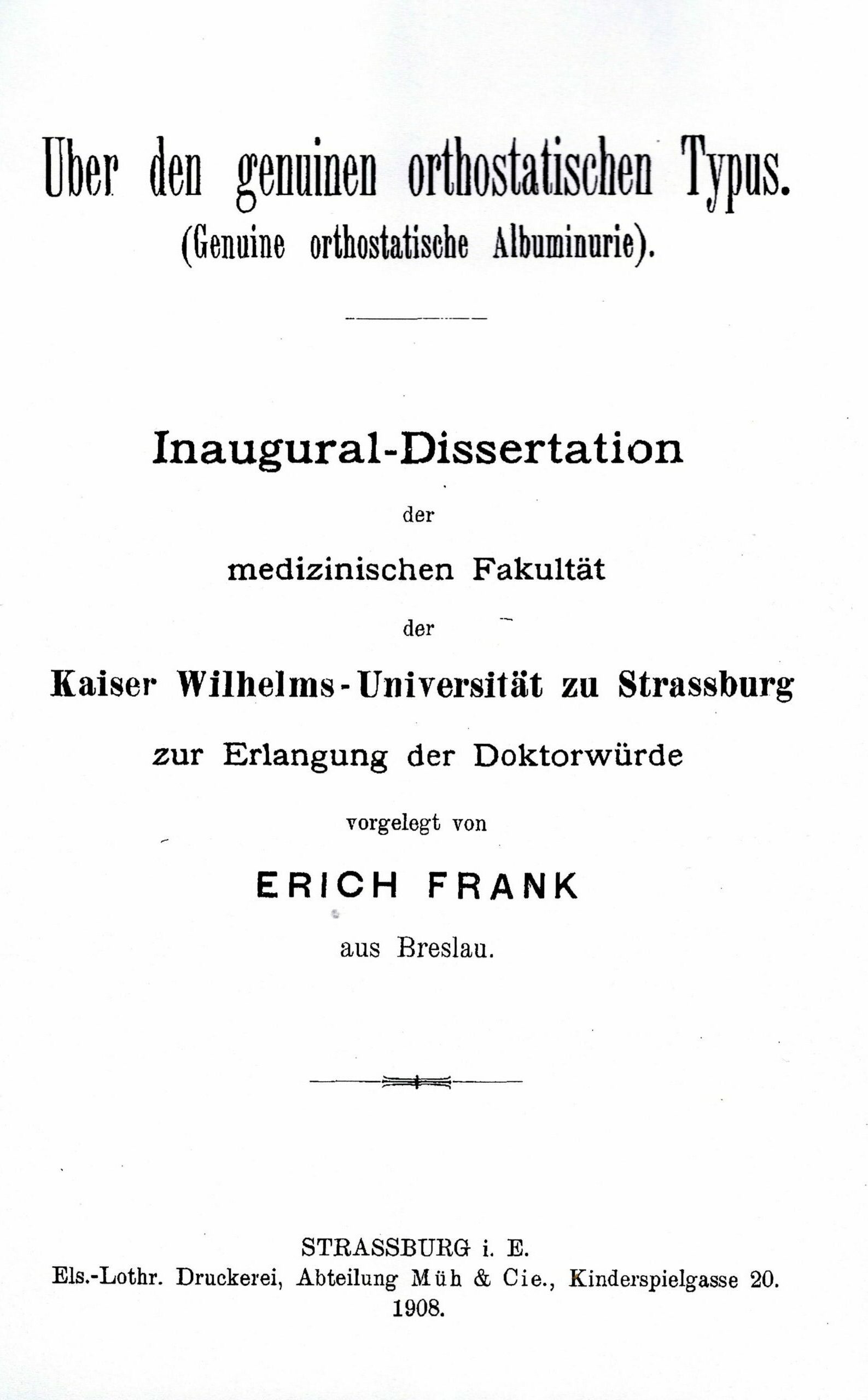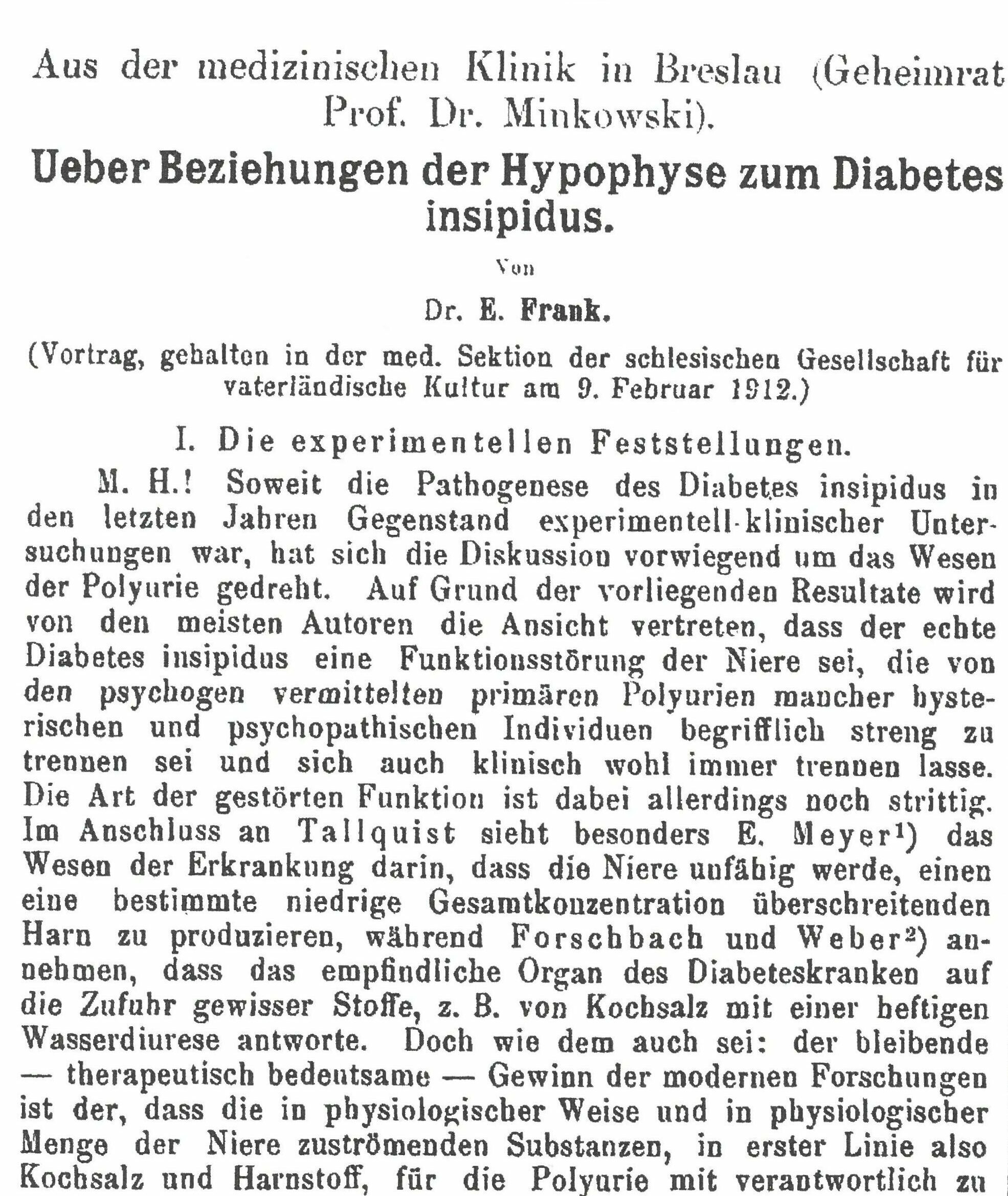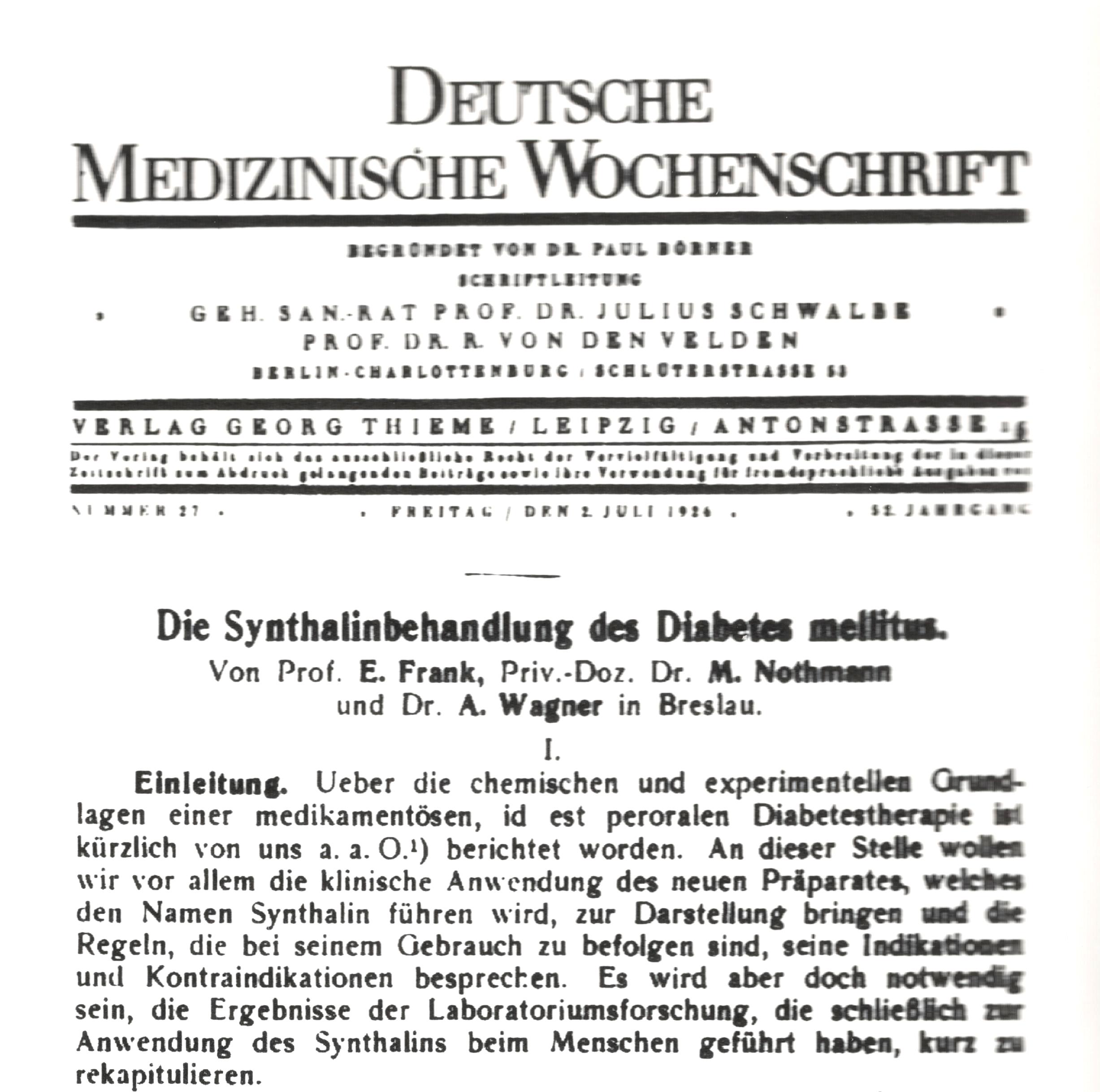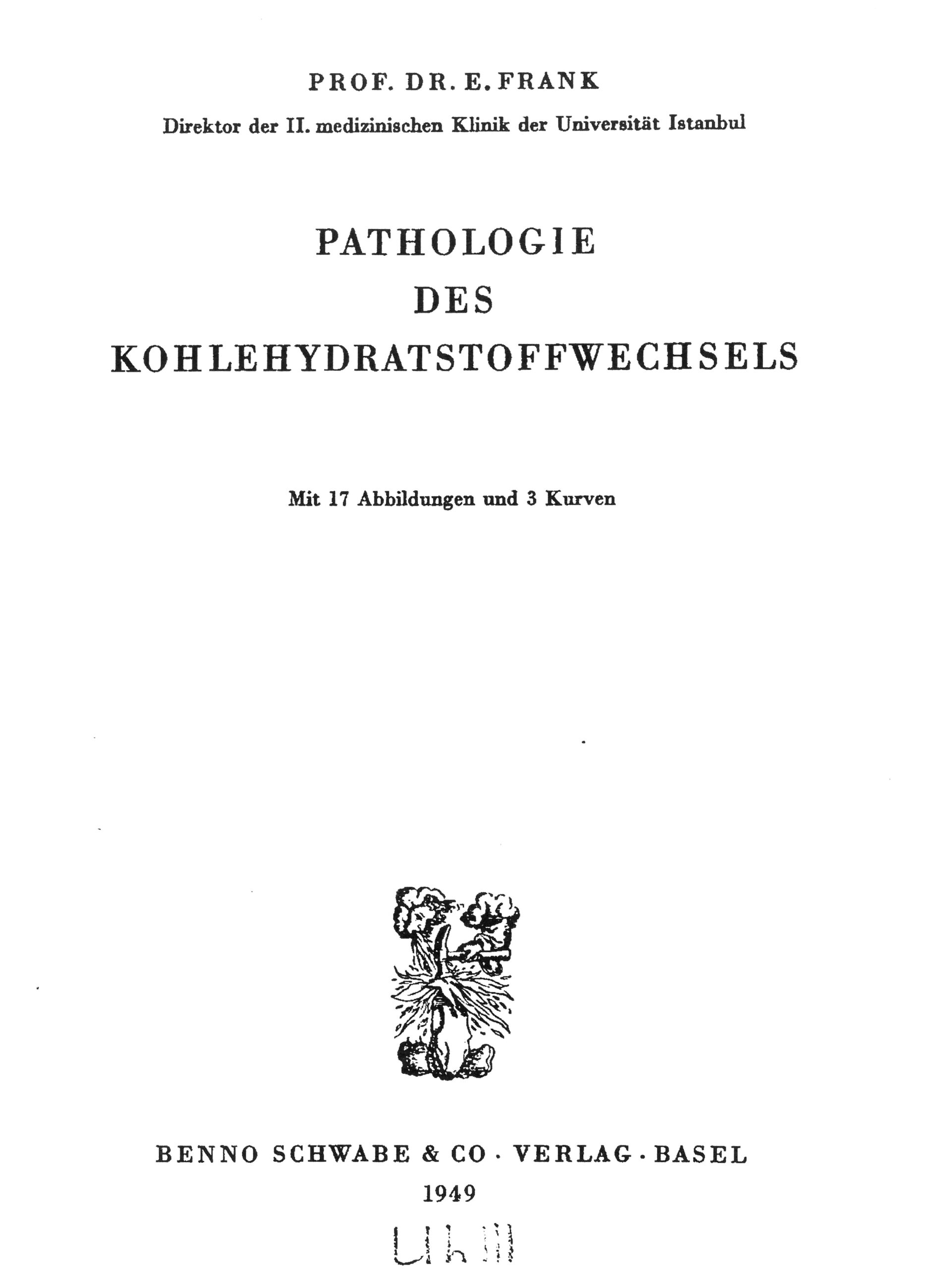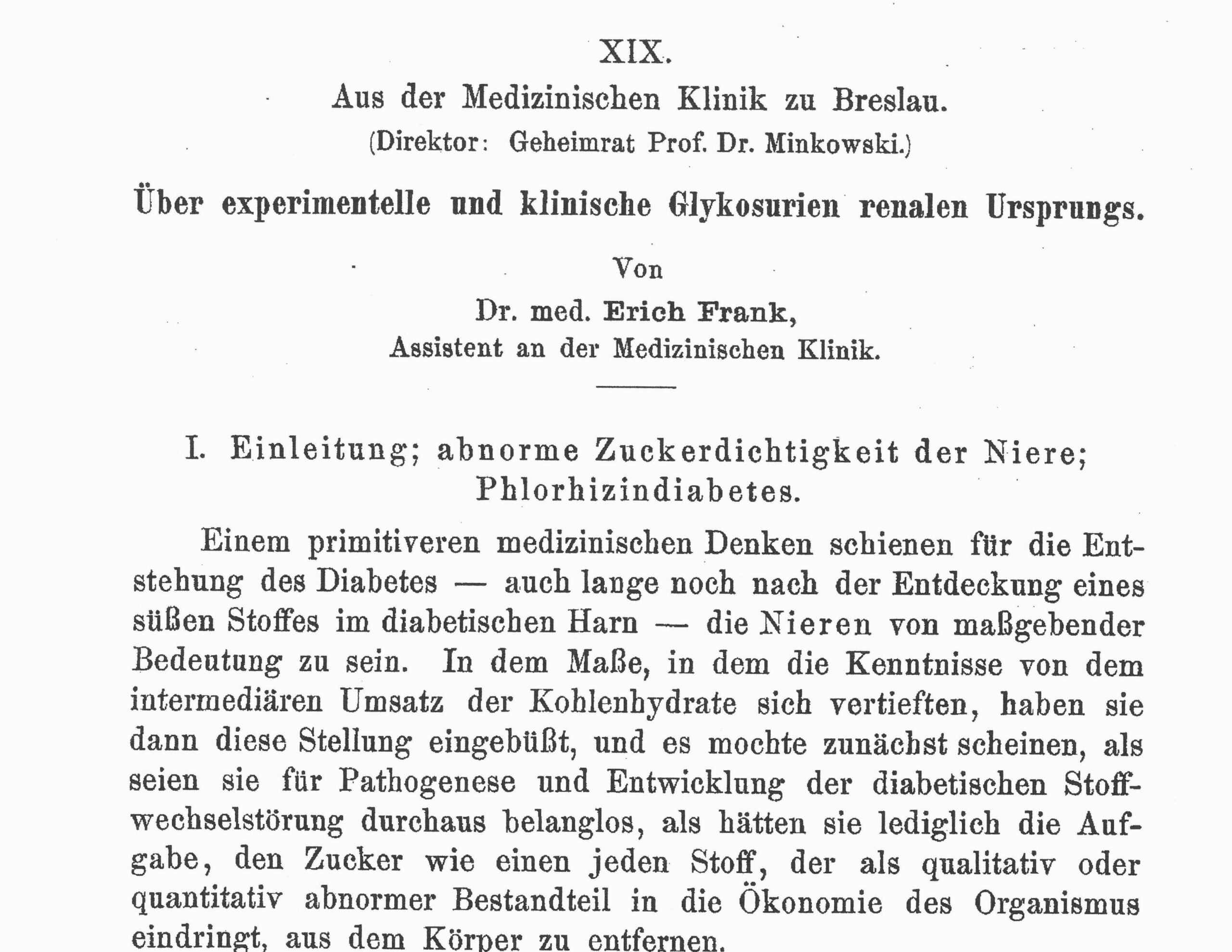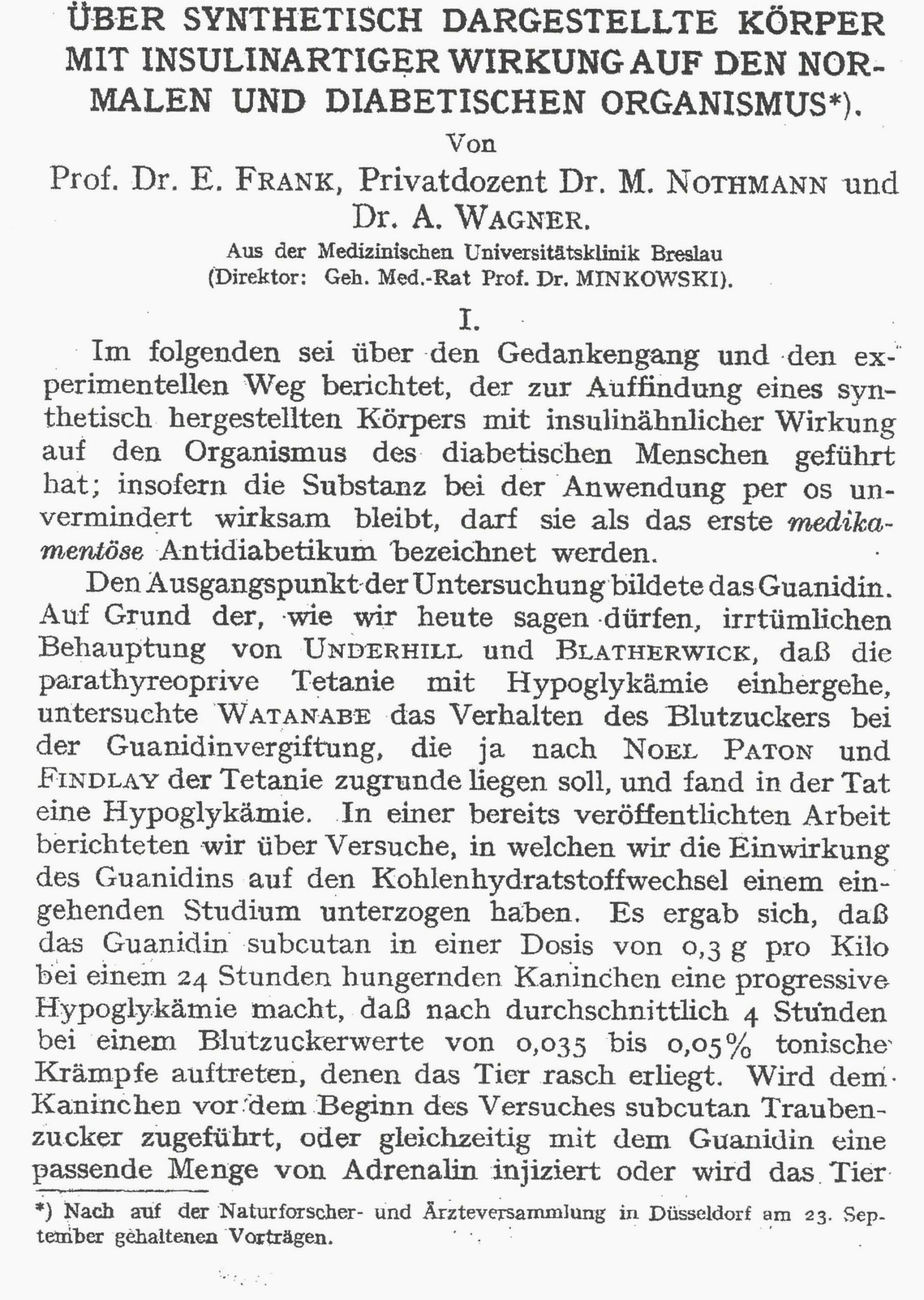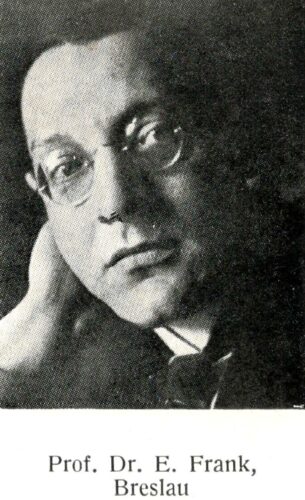Prof. Dr. med. Erich Frank
- Berlin, 28.06.1884
- Istanbul, 13.02.1957
- Member since 1927
- Escaped to Turkey in 1933
- Wrocław
- Specialist in internal medicine
Erich Frank was born in Berlin in 1884 as the son of the merchant Albert Frank and his wife Dorothea, née Jungmann.
Education and Places of Work
After graduating from the Königliches König Wilhelm-Gymnasium in Breslau/Wroclaw in 1902, Frank studied medicine in Breslau, where he passed the state examination in 1907. He completed the practical year in the medical clinic at the municipal hospital in Wiesbaden under Wilhelm Weintraud. Frank received his doctorate from the University of Strasbourg in 1908 with the thesis “Über den genuinen orthostatischen Typ”. He wrote his thesis under the supervision of the internist Friedrich Moritz, Bernhard Naunyn’s successor at the Strasbourg Medical Clinic.
He received his training in internal medicine under Wilhelm Weintraud, a diabetes and metabolism researcher, at the Medical Clinic of the Wiesbaden Municipal Hospital from 1908 to 1911. This had a lasting influence on him. Frank’s intensive preoccupation with questions of the therapy of diabetes mellitus probably originated with Weintraud. During his time in Wiesbaden, Frank participated in the clinical testing of salvarsan, among other things, at the suggestion of Paul Ehrlich. Frank published on experimental forms of diabetes together with Simon Isaac, who was also an assistant physician of Weintraud’s at the time.
Erich Frank moved to the Medical University Clinic in Breslau in 1911 to work with Oskar Minkowski, the leading diabetes researcher in Germany of his time. Frank habilitated in internal medicine at the Medical Faculty of the University of Breslau in 1913. He was appointed professor (extraordinarius) of internal medicine in Breslau in 1919. He was a senior physician at Minkowski’s clinic in 1918.
Erich Frank was appointed head physician of the department of internal medicine at the Breslau Municipal Wenzel-Hancke Hospital in 1926.
Frank’s scientific work focused on the field of metabolic research, endocrinology, blood diseases, and the autonomic nervous system. Based on his studies, he advanced the view of the “hypophysocentric origin of true diabetes insipidus” in 1912 and was thus one of the first to describe the association between diabetes insipidus and the posterior lobe of the pituitary gland. Erich Frank developed the new nosology of arterial hypertension and the concept of essential hypertension.
His research centred on diabetes mellitus. Frank, Martin Nothmann, and Arthur Wagner from the Medical University Clinic in Breslau introduced the first effective oral antidiabetic drug, the diguanidine “synthalin”, in 1926. This was a milestone in the oral treatment of diabetes. However, the drug, which was manufactured until 1945, was not widely used, due to undesirable side effects. The less toxic biguanides such as phenformin or metformin only became available around 1960.
Escape to Turkey in 1933
Frank was dismissed early from his leading position at the Wenzel-Hancke Hospital in Breslau in 1933. With the support of Albert Einstein, who – as chairman of the Union Sociétés OSÉ pour la Protection de la Santé des Populations Juives – appealed to the Turkish Prime Minister, and with the help of the initiative of the Frankfurt pathologist Philipp Schwartz for the emigration of German professors to Turkey, Erich Frank was able to leave Germany in autumn 1933. He worked as medical director of the II Medical Clinic of the newly founded Istanbul University from 1934 until his death in 1957. Frank was responsible for many initiatives, in particular for training in internal medicine in Turkey. He was accompanied by his colleague Kurt Steinitz from Breslau, who took over the laboratory management at the Istanbul University Medical Clinic, and the dietary nurse Elisabeth Wolff, who, in close cooperation with Frank, promoted up-to-date dietary therapy.
Frank’s textbook ‘Innere Klinik der Nierenkrankheiten’ was published in 1941 and his lectures on the ‘Klinik der Inneren Krankheiten’ (3 volumes) were translated into Turkish in 1951/56. Erich Frank also founded the “Istanbuler Zeitschrift für klinische Medizin” (Turkish: “Klinik Ilim”) in 1951.
Erich Frank died in Istanbul on 13 February 1957 at the age of 72. Frank is still held in great esteem in Turkey today, due to his great merits in the further development of internal medicine since 1934.
The Erich Frank Society was founded in Munich in 1984. The society aims to maintain and intensify relations between the medical faculties of Munich and Istanbul, among other things, through exchange programmes.
Sources and Further Reading
Sources
